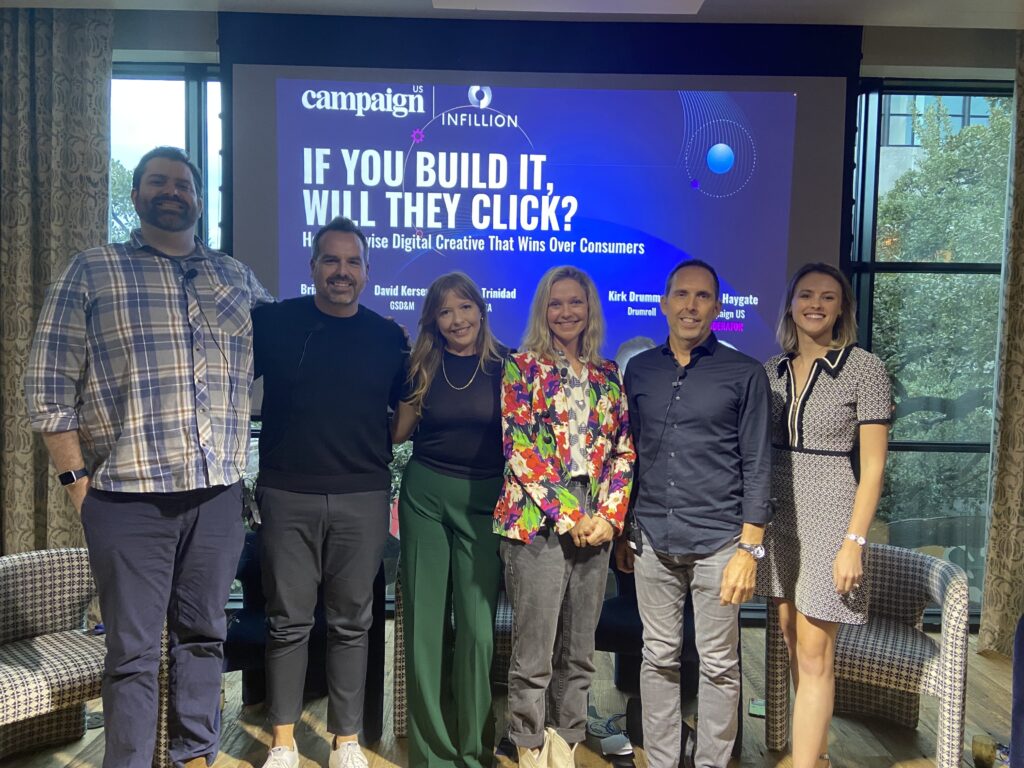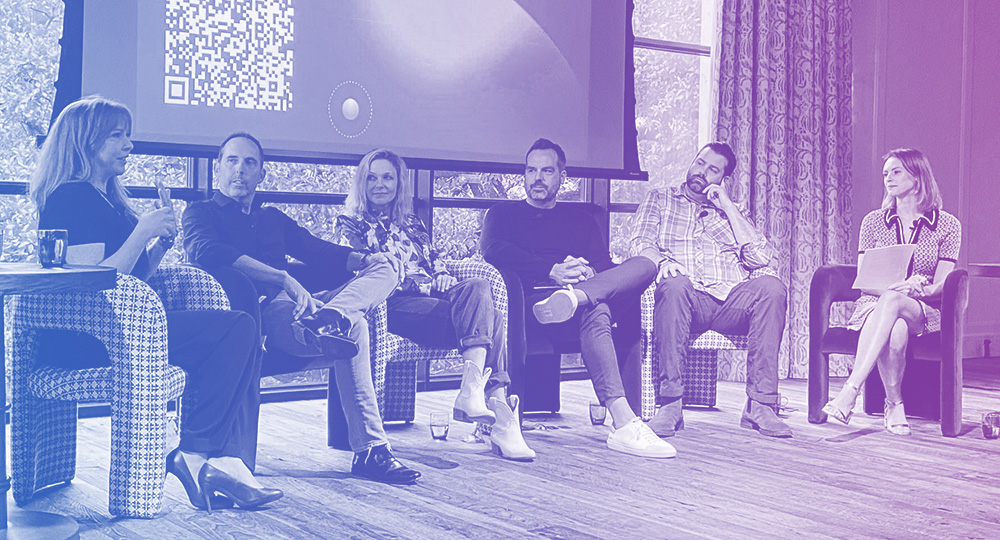Take a peek at the winners of every major ad industry awards show and you’ll see campaigns that push the limits of creativity and technology, from augmented reality to holographic out-of-home. But how many of these campaigns actually reached a wide audience, and how many of them made a meaningful impact on consumers? The most groundbreaking ads aren’t necessarily the most effective ads, and especially as the ad industry is tantalized by more innovations than ever (including but not limited to the metaverse) marketers have to maintain a healthy degree of skepticism about the hype cycle. To distill this challenge with creative leaders, Infillion partnered with Campaign US and headed to one of the most exciting hubs for the collision of technology and creativity: Austin. We hosted “If You Build It, Will They Click?” – a panel about balancing cutting-edge innovation with effectiveness and with what consumers really want. Campaign tech editor Jessica Heygate moderated this panel, featuring Infillion’s VP of Strategy, Brian Cullen; Claire Jordan, creative director of Proof Advertising; Dave Kersey, chief media officer of GSD&M; Megan Trinidad, executive creative director of R/GA; and Kirk Drummond, CEO and creative director of Drumroll. What’s the best way to balance an appetite for cutting-edge ads with the need to meet KPIs? Here are five learnings from our panel. (And you can read Campaign’s writeup here.)
Repetitive ads are still a problem, no matter how good they are – and Gen-Z in particular won’t put up with it.
“They need an experience,” said GSD&M’s Dave Kersey of Gen-Z consumers. “They need messaging specific to the platform, specific to their mental state in that moment of whatever they’re engaging with and why they’re engaging with it. They don’t want the same message across platforms at a 25x frequency. That’s off-putting to them. They turn ad blockers on, and we all lose in that scenario because then we can’t connect with them.” Campaign’s Jessica Heygate concurred: “You can have the best creative in the world, but if it’s blasted multiple times and not frequency capped, you end up losing that consumer.”
Here’s a litmus test for your next cutting-edge campaign – would it still be effective even without the cool new tech?
“Any time you get on the road, especially with a new technology, it’s going to be bumpy,” R/GA’s Megan Trinidad said. “For me, the main thing is to really have a grasp on the idea that you’re trying to get across, the experience you want people to have, and the purpose of the work that you’re trying to do. Because the reality is, technology should be the jet fuel of that idea and rocket it to the moon – but the idea should be good enough that it can run on diesel.”

Our speakers
Diving into the “next big thing” requires a mindset of learning and experimentation, not of fast returns.
Multiple panelists drew parallels to brands’ original experiments on the early internet – remember the Space Jam website? – and social media platforms. “Some brands were really intentional about exploration early on. Nike was one that stood out,” Kirk Drummond of Drumroll said. “If you frame it up as, ‘the point of this is to explore early and understand it deeply,’ you can eventually graduate your way to something that is highly experiential and meets the requirements that the audience is going to have. And I think that’s what the right brands did early on with just the web – they kept pushing it.” “We’ve been operating in a marketing world where all of the platforms ostensibly have similar KPIs,” Megan Trinidad of R/GA said. “You want people to interact with you. Clients, at the end of the day, expect large numbers of people to do the thing that you ask them to do. But the reality is when you introduce a new platform, those people don’t exist. They’re not there in those numbers. So you really have to adjust the expectations of your clients to understand the goals.”
The value exchange with consumers matters. Are you offering them something relevant?
“If you offer the right value, people will put the time in to get to it,” Claire Jordan of Proof Advertising explained. “I think our job is to offer that value and give people a reason to stick around. You can give them a free toaster, or you can give them a smile, or you can give them a game, or you can give them whatever you want to give, but they probably already have a toaster. So you probably need to think of something that will invite them to spend the time with whatever activation you’ve created and make it meaningful and worthwhile to them. And you only need one toaster.”
Don’t discount the lessons you can learn from other types of media – like video games.
“They have a head start on us in the ad industry,” Infillion’s Brian Cullen said. “They’ve been doing interactive storytelling for about 40 years more than we’ve been doing it. So all of these contemporary UX developments? How to onboard somebody to a complex system? They’ve been doing this for decades now.” For more thought leadership from the advertising industry’s leaders, follow Infillion on Linkedin.

